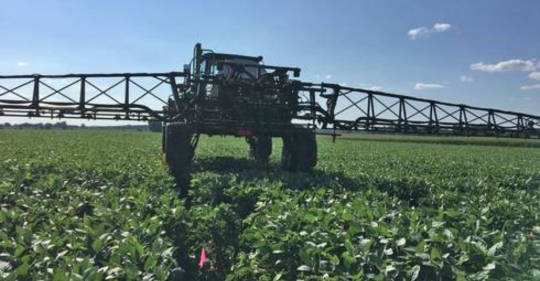Improving Soybean Health With Foliar Fungicide And Nitrogen

By: Michigan State University
We demonstrated a modest but significant soybean yield increase using a Prioxar fungicide spray at R3 in 2017. In 2018, we intended to boost yield further by combining the fungicide with a small dose of late season foliar nitrogen. A report in the 2017 Agronomy Journal publication reported that biological fixed nitrogen in root nodules and soil nitrogen typically provide enough nitrogen N for 55 to 60 bushels, but for high yields above 60 bushels, supplemental nitrogen may be needed to fill the last pods. This is because nodule activity decreases exponentially toward the end of the soybean plant lifecycle.
The objective was to increase the current soybean yield by 10 percent. The hypothesis is that soybean yield will be increased by improving overall plant health (disease control, leaf retention and photosynthetic duration). Priaxor is effective in controlling several soybean fungal diseases. The data would enable us to better predict and identify soil and plant conditions where a positive yield response can be expected.
This trial consisted of three treatments: T1, check (Grower Standard Practice with no foliar treatments; T2, foliar applied Prioxar at the rate of 8 fluid ounces per acre at R3; and T3, foliar applied Priaxor at 8 fluid ounces per acre tank mixed with 30 pounds nitrogen per acre (in the form of 28 percent nitrogen) at R3.


